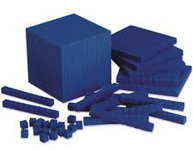| 1.
Make sense of problems and persevere in solving them. |
 |
Mathematically
proficient students start by explaining to themselves
the meaning of a problem and looking for entry points
to its solution. |
|
| I
can... |
ANALYZE
relationships (how things are similar or connected). |
USE
real objects or pictures to understand and recreate
the problem. |
PLAN
a solution and make hypotheses (educated guesses). |
CHECK
my answers using a different method or way. |
MONITOR
my progress. |
UNDERSTAND
how other people solve the problem. |
EVALUATE
my progress. |
IDENTIFY
the similarites between the way other people solve the
problems. |
| EXPLAIN
relationships between tables, charts, graphs, or diagrams. |
|
|
| |
| 2.
Reason abstractly and quantitatively. |
 |
Mathematically
proficient students make sense of quantities and their
relationships in problem situations. |
|
| I
can... |
REPRESENT
the problem using manipulatives and/or equations. |
UNDERSTAND
the meaning of an answer. |
IDENTIFY
the units involved. |
USE
different properties of operations to solve problems. |
~CONTEXTUALIZE~
Put numbers in a real-world context. |
~DECONTEXTUALIZE~
Pull numbers out of context and work with them mathematically. |
|